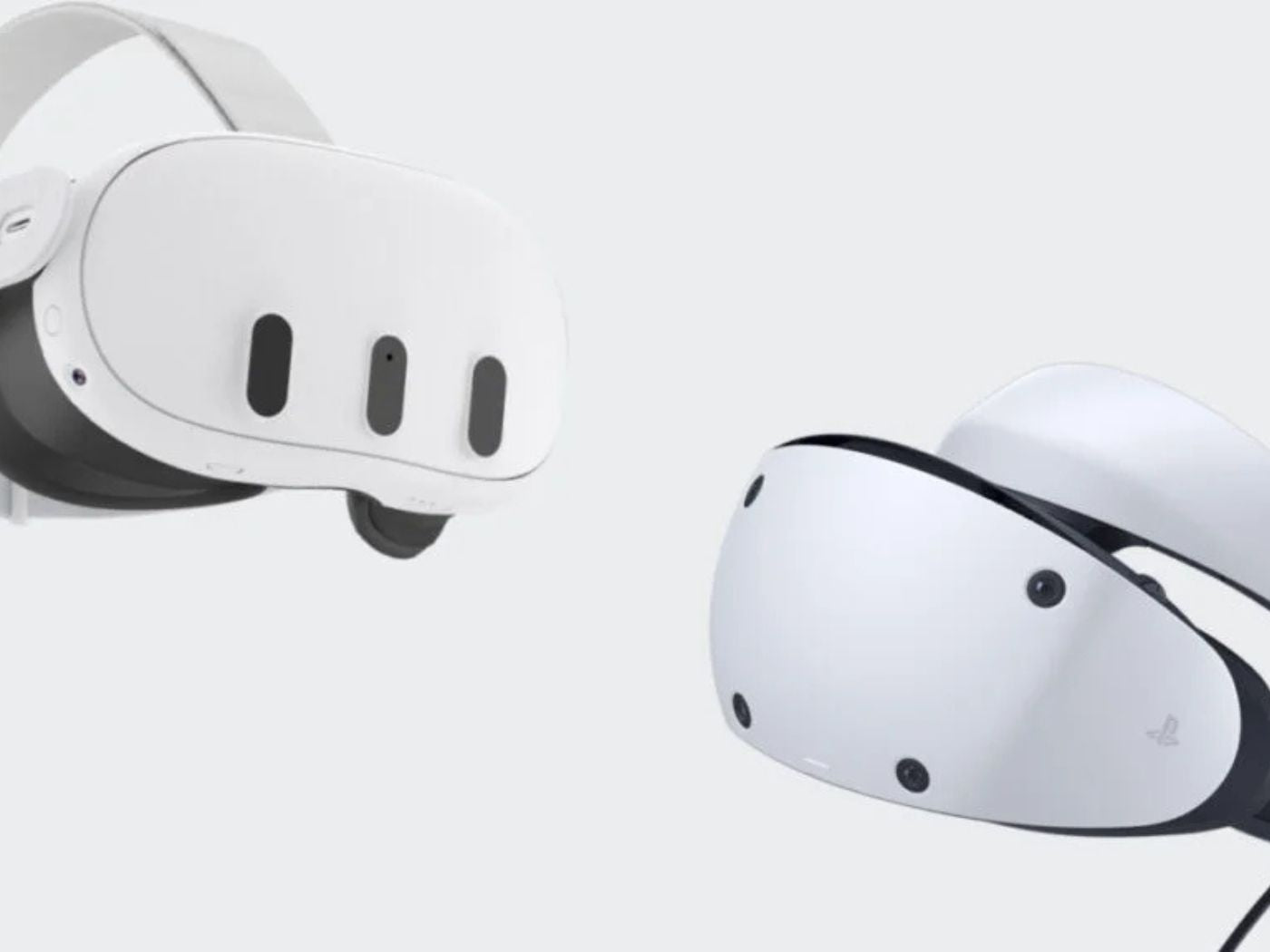The Meta Quest 3 and PSVR 2 represent the forefront of next-gen VR technology, catering to a diverse audience with their unique features and design philosophies.
Meta Quest 3 offers a wireless and standalone VR experience, emphasizing accessibility and versatility. On the other hand, PSVR 2, developed by Sony, is a tethered headset that leverages the power of the PlayStation 5 console, delivering high-end graphics and exclusive AAA titles.
Design and Comfort
The Quest 3, with its innovative pancake lenses and wireless design, boasts a slimmer profile and lighter weight, offering users a more balanced and comfortable fit. However, in its pursuit of affordability, it places the onus on users to enhance their experience with optional accessories.

While the default cloth strap improves balance compared to its predecessor, many opt to invest in the Elite Strap for superior comfort. Additionally, the default facial interface, although adjustable to accommodate glasses wearers, can lead to lens fogging, prompting some users to seek third-party solutions.
On the other side, the PSVR 2 embraces a more holistic approach to design and comfort. Featuring a built-in halo strap, it provides robust support across the forehead, eyes, and the back of the head.

The design allows for a hassle-free setup, emphasizing comfort and ease of use. It even includes eye-tracking technology to ensure that the headset is positioned perfectly for each user's eyes, a feature absent in the Quest 3.
Lenses And Display
When it comes to virtual reality, what meets the eye plays a pivotal role in shaping the overall experience. Both the Meta Quest 3 and PSVR 2 incorporate innovative optical solutions, but they take distinct approaches to delivering stunning visuals.

In the optics department, Meta Quest 3 opts for next-gen pancake lenses, which are engineered to provide a sharper and clearer image with minimal visual artifacts. These lenses have a unique accordion-style design that allows them to be compact, making the headset lighter and more balanced. They also offer a more forgiving "sweet spot," accommodating various user preferences and facial profiles.

In contrast, the PSVR 2 employs fresnel lenses, a prevalent choice among VR headsets. While effective in their own right, fresnel lenses tend to be thicker and can result in visual imperfections like ghosting and light artifacts. They may also create a more pronounced sweet spot, causing peripheral blurriness. In the realm of field of view, both headsets aim to provide immersive experiences, albeit with slight differences in their advertised specifications.
Games And Graphics
The PSVR 2 excels in delivering top-tier graphics and performance. With its capacity to run AAA games like Resident Evil Village and Gran Turismo 7 in VR, it provides unparalleled visual fidelity that wireless headsets may not achieve for quite some time.

Sony's strong partnerships with first-party studios grant it exclusive titles such as Horizon Call of the Mountain and Humanity, offering gaming experiences beyond what the Meta Quest can provide.
On the flip side, the Quest 3 emphasizes flexibility, offering a wireless and modular design that encourages user customization and freedom of movement. While it may not match the PSVR 2 in graphical prowess, it significantly improves upon its predecessor.

Quest 3 games benefit from an impressive 2,064 x 2,208 pixels per eye, creating an immersive experience. Its extensive game library includes a multitude of titles available through both the Oculus Store and SteamVR, offering diversity and accessibility.
Making The Choice
If you're already a PlayStation 5 owner, the PSVR 2 might seem like the more cost-effective option, despite its higher initial price tag. The investment in the console pays off when paired with the PSVR 2, providing access to breathtaking visuals, exclusive AAA titles, and immersive gaming experiences.
However, it's essential to consider the tethered nature of the PSVR 2, which limits your freedom of movement and may introduce cable management concerns.
On the other hand, the Meta Quest 3 offers a wireless, standalone VR experience that's more affordable and versatile. Its design encourages mobility and adaptability, making it suitable for different gaming spaces and scenarios. While it may not match the graphical prowess of the PSVR 2, it provides a wealth of games, many of which are also accessible on the PSVR 2, with graphical enhancements and unique perks.
Recommended Blogs:
- VR Headset Comparison – Quest 3, Quest 2, Quest Pro, Pico 4, and Apple Vision Pro
- Meta Quest 3, 2, & Pro Controllers - Which One Is The Best?
Recommended Meta Quest 3 Accessories:
1. ZyberVR Elite Strap for Quest 3
2. ZyberVR Neck Power Bank
3. ZyberVR 3-in-1 Handles
4. ZyberVR ACE Elite Strap for Quest 3
Conclusion
Your decision depends on your gaming priorities. If you seek a traditional, console-tethered VR experience with top-tier visuals and exclusive titles, the PSVR 2 is a compelling choice. However, if you prioritize flexibility, affordability, and a broad range of games, the Meta Quest 3 offers an enticing alternative.





